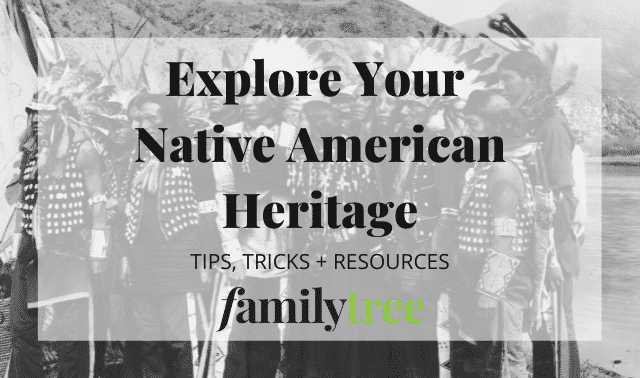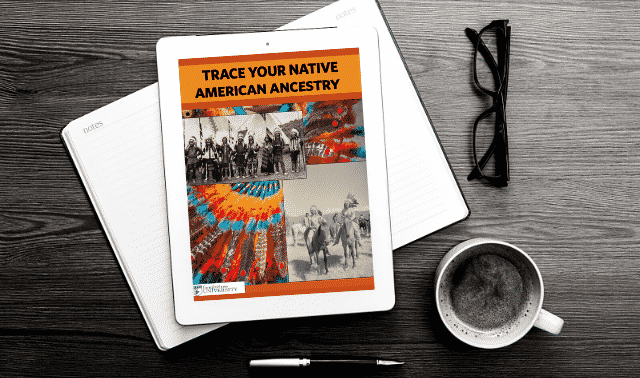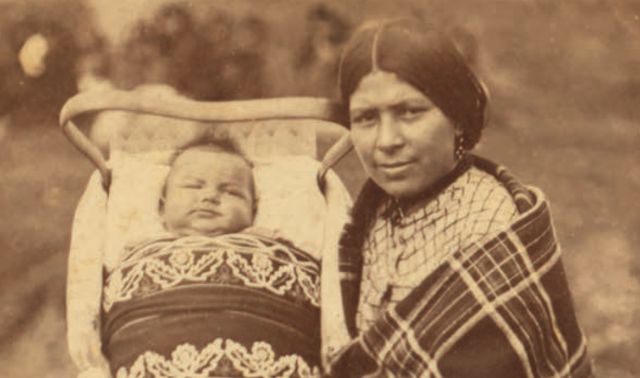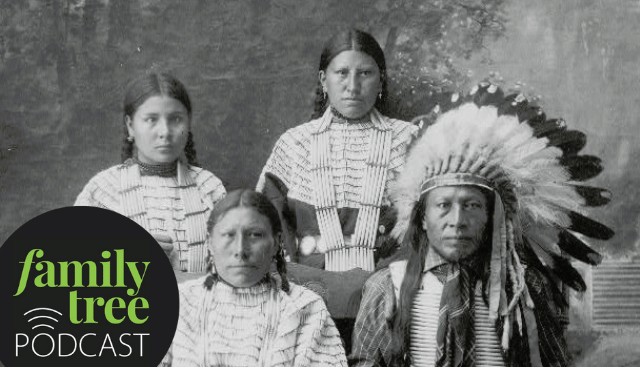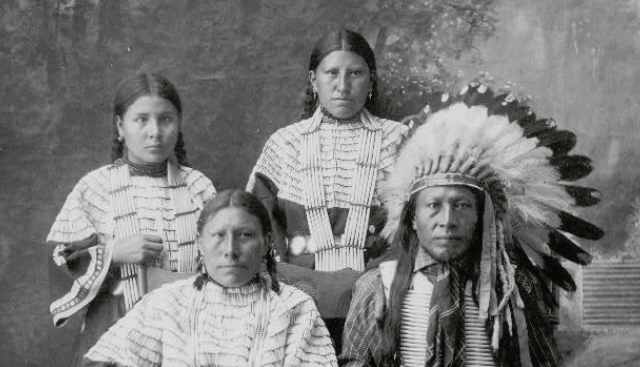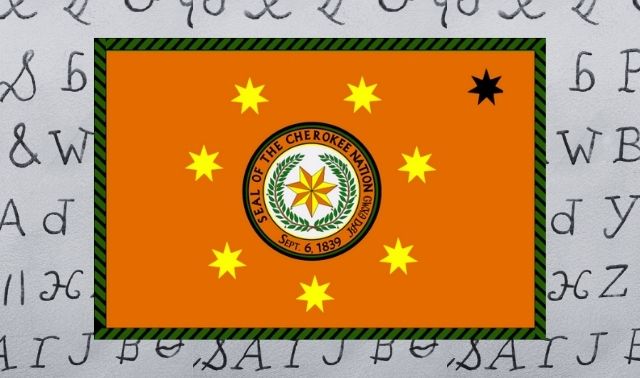Sign up for the Family Tree Newsletter! Plus, you’ll receive our 10 Essential Genealogy Research Forms PDF as a special thank you.
Get Your Free Genealogy Forms
"*" indicates required fields

Questions
How can I find information about my Cherokee ancestor?
Did my Native American ancestors remain on their land?
How do I begin researching my Cherokee ancestors, even though I was adopted?
Q: My great-grandmother was Cherokee. How do I find information about her?
A: At least you didn’t say she was a “Cherokee princess.” Family stories about American Indian ancestry are among the most common genealogy myths. Of course, your great-grandmother may indeed have been all or part Cherokee, but as you search for information about her, it’s best to maintain a healthy degree of skepticism.
The first available US census listing most American Indians is 1900. For predominantly Indian areas, special schedules identified one’s tribe and parents’ tribes. For Indians living among the general population, only color or race was designated, such as “Indian” or “white.” If your ancestor’s tribe isn’t identified in the 1900 census, you can learn about the tribes living in the area using resources such as The Indian Tribes of North America by John R. Swanton (Genealogical Publishing Co.). The National Archives and Records Administration (NARA) also recommends A Guide to the Indian Tribes of Oklahoma by Muriel H. Wright (University of Oklahoma Press) and The Indians of Texas by W.W. Newcomb Jr. (University of Texas Press).
For Cherokee ancestors, consult the Dawes Commission Rolls, which list members of the Five Civilized Tribes (Cherokee, Chickasaw, Choctaw, Creek and Seminole) between 1898 and 1914. NARA has an online index and tutorial for these records.
ADVERTISEMENT
Note that the Dawes Commission rejected nearly two-thirds of applications for tribal membership, and earlier 1896 applications were all declared invalid. To find census cards and application jackets for rejected applicants, plus invalid forms, visit NARA’s Fort Worth regional facility. It has microfilm indexes for those rejected as Cherokee or Choctaw, as well as the invalid 1896 applications.
You can also search the Guion Miller Rolls, which list applicants for a federal fund compensating Cherokee families who lost land because of the 1830 Indian Removal Act. See an index here.
Other helpful resources at NARA include records of the Bureau of Indian Affairs (BIA); field records from the BIA are held in the Archives’ regional offices. For a guide to BIA records, order publication 163, Records of the Bureau of Indian Affairs, compiled by Edward E. Hill. See http://archives.gov/publications/ordering/index.html#free for ordering information.
ADVERTISEMENT
Answer provided by David Fryxell
A version this this article appeared in the March 2011 issue of Family Tree Magazine.
Q: I know Native American tribes in the South were moved to Oklahoma. Could I still have Native American ancestors even if they weren’t moved?
A: There’s plenty of American history that we didn’t get taught in school! While many Native Americans were forced to march westward, not all left their lands in the east. Mixed-blood families today are common throughout the eastern United States, though many have forgotten their heritage, as it was never talked about except perhaps as a legend. Remember, only recently has being of Native American descent been accepted and even sought after. In the Midwest, the Scotch-Irish and the French make up the largest intermarriage group among Native American tribes. In the mid-South the Scotch-Irish, English, Scots and Welsh intermarried to such a degree that almost all traces of Native American ancestry have been lost as families “passed for white.” Families that could not “pass” would either intermarry among each other or often became merged into African-American families.
If you’re looking at the US censuses and you find your ancestor listed as “free color,” “black,” “mulatto” or even as “Indian,” there’s no telling what exactly that meant to the census taker. It may be the first clue to Native American ancestors or it may be simply an ancestor with a dark complexion.
Another clue might be if your ancestors can be traced back to a county where specific surnames are known to be mixed-blood or “free color” prior to the Civil War. This is especially true in North and South Carolina, where these families are still recognized by residence and surname. Such families may reorganize their tribe and openly keep their heritage alive—a claim they’ve substantiated through genealogy research for state and federal acknowledgment of their tribe. Some of these tribes have websites; others are just beginning the genealogy process.
Here’s just one example. In Harnett and Sampson counties of North Carolina, the Coharie families have reorganized with tribal headquarters in the town of Clinton. The old core families that make up the tribe are Ammons, Bledsole, Brewingtion, Burnette, Carter, Emanuel, Faircloth, Goodman, Hardin, Immanuel, Jacobs, Jones, Manuel, Maynor, Robinson, Simmons, Strickland, West and Williams. Although there are fewer than 2,000 people enrolled in the tribe, uncountable others can trace their ancestry to these core families. This is American history at its best.
Answer provided by Dwight Radford
A version of this article appeared in the August 2000 issue of Family Tree Magazine.
Q: I was adopted, but recently re-connected with my birth siblings. I found out I am a fourth-generation Cherokee on both my birth mother’s and father’s sides. How do I begin to trace my ancestors?
A: Congratulations on connecting with your birth siblings! To trace any Indian blood, you need to clearly establish your connection generation by generation to the Cherokee ancestry. This would include interviewing family members, checking state and federal census records, probate records, birth, marriage, and death records, tombstones, obituaries, and other records that will pertain to the time period and geographic location of the ancestors. Do some online checks to see if you can find others researching the same families.
You need to place your Indian ancestors into an area where Cherokee Indians lived or find them interacting with others of Cherokee ancestry. Not all people with Indian ancestry identified themselves as Indians, and this may add some difficulty to proving your Cherokee heritage. You should read state and local histories for the places where they lived.
There are many Indian-specific records including censuses, allotment and annuity records. Many of these are available via the Family History Library in Salt Lake City. There are some lists and indexes specific to Cherokee families, including the Dawes, Guion Miller and other rolls. Some are published in book format, others on online or on microfilm.
If you are new to genealogy, you might take classes on the subject and read some of the guidebooks on doing research.
Answer provided by Paula Stuart Warren
ADVERTISEMENT

